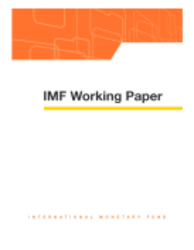
De Jure Versus De Facto Exchange Rate Regimes in Sub-Saharan Africa
There are 22 countries in Sub-Saharan Africa (SSA) with floating exchange rate regimes, de jure. Some target the money supply or the inflation rate; others practice "managed floating." Statistical analysis on monthly data for the past decade reveals that in most cases these exchange rate regimes can be approximated surprisingly well by a soft peg to a basket dominated by the US dollar. The weight on the dollar appears to have fallen somewhat across the continent in the aftermath of the global financial crisis. Replicating the model with weekly data for The Gambia suggests that the focus on the dollar might be even more pronounced at higher data frequencies. While there might be strong arguments in favor of limiting exchange rate volatility in SSA countries, soft-pegging to the dollar does not appear to be the best fit for them, given the currency structure of their external trade and finance. The paper concludes by discussing some policy options for SSA countries with flexible exchange rates, in the context of an illustrative recent country case.
Publication date: August 2011
ISBN: 9781462304233
$18.00
Add to Cart by clicking price of the language and format you'd like to purchase
Available Languages and Formats
| English |
Prices in red indicate formats that are not yet available but are forthcoming.
Topics covered in this book
This title contains information about the following subjects.
Click on a subject if you would like to see other titles with the same subjects.
Economics- Macroeconomics , Economics / General , International - Economics , exchange rate , exchange rates , exchange rate regime , equation , dollar exchange rate , floating exchange rate , floating exchange rate regimes , de facto exchange rate regimes , statistical significance , standard errors , dollar exchange rates , correlation , statistics , bask
Summary
Copyright © 2010 - 2025
Powered by:
AIDC



